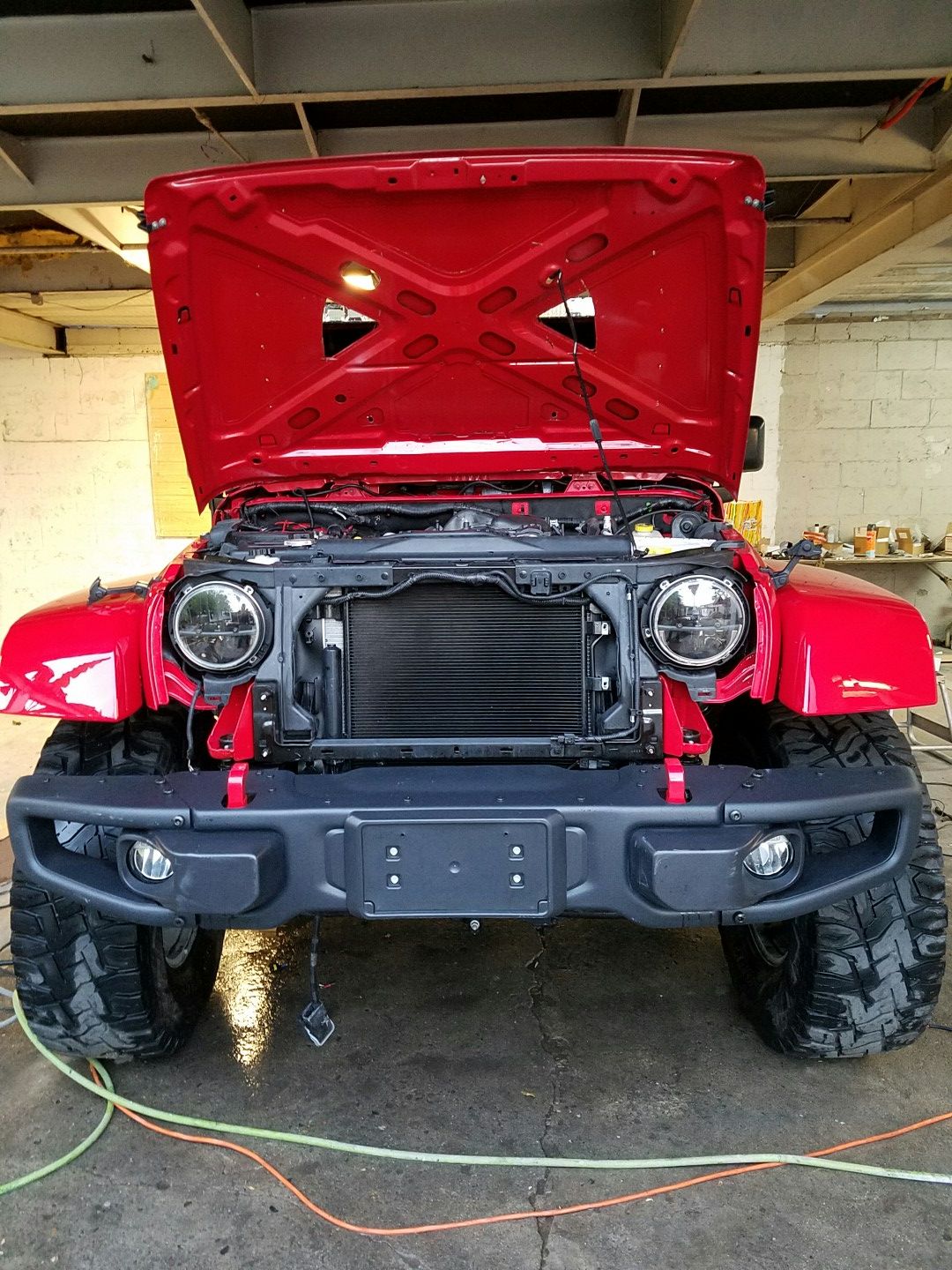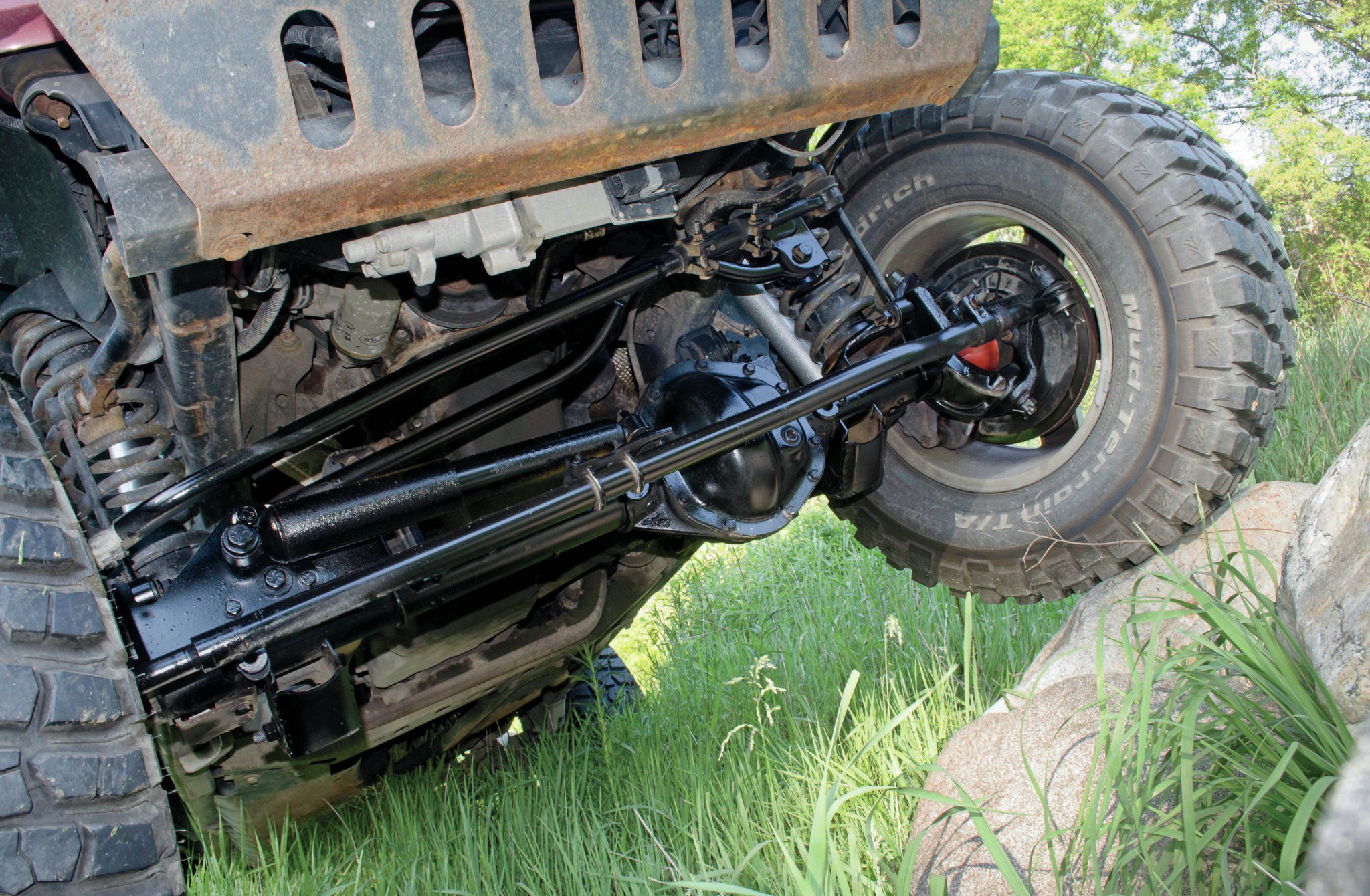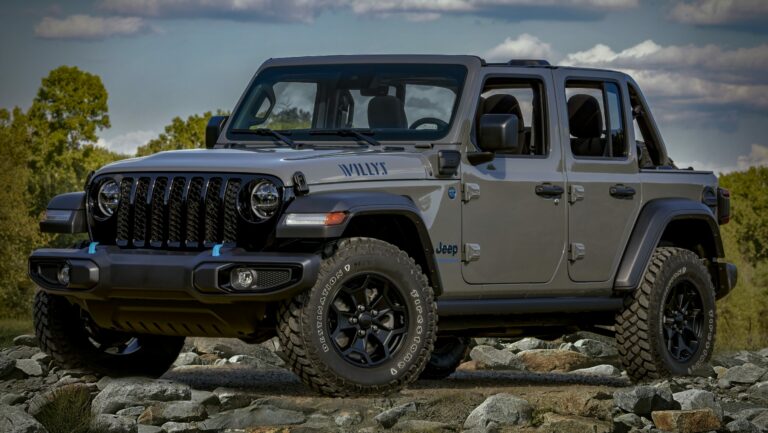Jeep JK Axles For Sale: A Comprehensive Guide to Upgrading Your Wrangler’s Foundation
Jeep JK Axles For Sale: A Comprehensive Guide to Upgrading Your Wrangler’s Foundation jeeps.truckstrend.com
The Jeep Wrangler JK (2007-2018) is an icon of off-road capability, renowned for its rugged charm and impressive performance. However, as enthusiasts push their vehicles further with larger tires, more aggressive trails, and demanding modifications, one component often becomes the limiting factor: the axles. For many JK owners, the quest for enhanced durability, strength, and performance inevitably leads to the search for "Jeep JK Axles For Sale." This comprehensive guide will navigate the complex world of JK axle upgrades, offering insights into why, what, and how to make the right choice for your build.
Why Upgrade or Replace Your JK Axles? The Foundation of Off-Road Capability
Jeep JK Axles For Sale: A Comprehensive Guide to Upgrading Your Wrangler’s Foundation
Your Jeep JK’s axles are the backbone of its drivetrain, connecting the wheels to the differential and ultimately, the engine’s power. They bear the brunt of impacts, torques, and stresses, especially when venturing off the beaten path. While stock JK axles are perfectly adequate for daily driving and light trail use, several compelling reasons drive owners to seek replacements or upgrades:
- Accommodating Larger Tires: The most common reason for axle upgrades. Stock axles, particularly the front Dana 30 and rear Dana 35 (found in non-Rubicon models), struggle under the increased stress of tires 35 inches and larger. Larger tires mean more rotational mass, greater leverage on axle shafts, and increased strain on differential components, often leading to bent axle tubes, broken shafts, or damaged gears.
- Heavy Off-Roading and Rock Crawling: Aggressive trails, challenging obstacles, and situations requiring maximum articulation or sudden power delivery can quickly exceed the strength of OEM axles. Aftermarket axles are designed with thicker tubes, stronger shafts, and more robust components to withstand extreme punishment.
- Correcting Gearing for Performance: When installing larger tires, re-gearing (changing the differential’s final drive ratio) is crucial to restore lost power, improve fuel economy, and reduce strain on the drivetrain. Often, when re-gearing, owners opt to upgrade the entire axle assembly simultaneously for future-proofing and added strength.
- Damage or Wear: Accidents, chronic abuse, or simply high mileage can lead to bent axle housings, worn-out bearings, damaged differential components, or excessive rust. Replacing the entire axle assembly can be more cost-effective and provide a stronger solution than continuous repairs.
- Enhanced Durability and Peace of Mind: Knowing your axles can handle whatever you throw at them provides invaluable confidence on the trail, reducing the risk of a breakdown far from civilization.

Understanding JK Axle Types: OEM vs. Aftermarket Solutions
Before diving into the market, it’s essential to understand the types of axles commonly found on JKs and the aftermarket alternatives available.
OEM Jeep JK Axles:
- Front Dana 30: Standard on all non-Rubicon JKs. It’s a semi-float axle with a small ring and pinion, relatively thin axle tubes, and weaker U-joints. Adequate for up to 33-inch tires with careful driving, but prone to issues with 35s or larger, especially under aggressive use.
- Rear Dana 35: Standard on all non-Rubicon JKs. Also a semi-float axle, it shares similar limitations to the Dana 30. Notorious for weaker shafts and a smaller ring and pinion compared to the Dana 44. Generally not recommended for tires over 33 inches.
- Front Dana 44: Standard on all JK Rubicon models. A significant upgrade over the Dana 30, featuring a larger ring and pinion, thicker tubes, and stronger components. While better, it’s still a semi-float design and can experience issues with bent tubes or worn ball joints under 37-inch tires or larger, especially with heavy off-road use.
- Rear Dana 44: Standard on all JK Rubicon models and some Sahara/Sport models (though the Rubicon version is often more robust with thicker tubes and stronger shafts). It’s a semi-float axle and generally more durable than the Dana 35. With aftermarket shafts, it can hold up to 37-inch tires for moderate use, but extreme rock crawling or larger tires will push its limits.

Aftermarket Jeep JK Axles:

Aftermarket axles are designed to address the limitations of OEM units, offering superior strength, wider stances, and more customization options.
- Upgraded Dana 44s (e.g., Dynatrac ProRock 44, Currie RockJock 44, G2 Axle & Gear, TeraFlex CRD 44): These axles often use the same ring and pinion as the OEM D44 but feature much stronger housings (thicker tubes, reinforced knuckles), chromoly axle shafts, heavy-duty ball joints, and often come with upgraded braking systems. They are a popular choice for those running 37-inch tires and provide a significant strength increase over stock D44s without the full expense of a D60. Many are available in wider-than-stock configurations.
- Dana 60 (e.g., Dynatrac ProRock 60, Currie RockJock 60, Ultimate 60): The gold standard for serious off-roaders. Dana 60s feature massive ring and pinions, extremely thick axle tubes, full-float designs (where the axle shaft only transmits torque, not vehicle weight), and larger components throughout. They are built to handle 40-inch+ tires and extreme abuse. While heavy and expensive, they offer unparalleled strength and durability.
- Dana 80/Sterling 10.5 (Less Common): Even larger and stronger than Dana 60s, these are typically reserved for custom builds running massive tires (42 inches+) or for vehicles used in professional competitive events. Their size and weight make them impractical for most JK builds.
Key Considerations When Buying Jeep JK Axles For Sale
The decision to purchase new axles is significant and requires careful planning. Here’s what to consider:
- Intended Use & Tire Size: This is the most crucial factor. Are you building a daily driver that sees occasional dirt roads, a weekend warrior tackling moderate trails, or an extreme rock crawler aiming for the toughest lines? Your tire size directly dictates the required axle strength.
- Up to 33-inch: Stock D30/D35 (with caution) or stock D44s are generally okay.
- 35-inch: Upgraded D44s (chromoly shafts, stronger ball joints) are highly recommended. Stock D44s can work but are at their limit.
- 37-inch: Aftermarket D44s (like ProRock 44) are the minimum. A front D60/rear D44 combo is also popular.
- 38-inch+: Full D60 front and rear is highly recommended, if not mandatory.
- Budget: Axles represent a substantial investment.
- Used OEM Axles: Can be found for a few hundred to a couple thousand dollars, but inspect thoroughly.
- New OEM Axles: Available from dealerships or Mopar parts suppliers, but generally not cost-effective for upgrades.
- Aftermarket Upgraded D44s: Range from $3,000 – $7,000+ per axle, depending on features (gearing, lockers, width).
- Aftermarket D60s: Typically $7,000 – $15,000+ per axle, making a full front and rear setup a significant investment.
- Remember to factor in shipping, installation, and associated costs like new driveshafts, brake lines, and possibly wheels.
- Gearing: Ensure both front and rear axles have the same gear ratio. If buying complete axle assemblies, they often come with pre-installed gearing. If not, you’ll need to purchase and install ring and pinion sets, a job best left to experienced professionals.
- Lockers: Many aftermarket axles come with selectable lockers (air or electric) already installed, providing on-demand traction. If not, consider adding them as part of your upgrade.
- Axle Width: Aftermarket axles are available in stock width, "plus" widths (e.g., +2 inches per side), or custom widths. Wider axles improve stability but may require fender flares or larger fenders to stay street legal and prevent tire rubbing.
- Bolt Pattern: Stock JKs use a 5×5 (5 on 5-inch) bolt pattern. Some heavy-duty aftermarket axles, especially D60s, may come with an 8-lug bolt pattern, requiring new wheels.
- Installation: Swapping axles is a complex job that involves suspension components, steering, brakes, and driveshafts. While mechanically inclined individuals can attempt it, professional installation by a reputable 4×4 shop is often recommended to ensure safety and proper functionality.
Where to Find Jeep JK Axles For Sale
The market for JK axles is diverse, offering options for every budget and build.
- Online Retailers: Major off-road parts suppliers like Quadratec, ExtremeTerrain, Northridge4x4, Summit Racing, and 4 Wheel Parts offer a wide selection of new aftermarket axles from top brands. They often have detailed product descriptions, customer reviews, and financing options.
- Specialty Axle Manufacturers: Companies like Dynatrac, Currie Enterprises, G2 Axle & Gear, and TeraFlex specialize in high-performance axle assemblies. Buying directly from them ensures expert advice and customization options.
- Used Parts Market: Facebook Marketplace, Craigslist, dedicated Jeep forums (e.g., JK-Forum.com, WranglerForum.com), and local 4×4 swap meets are excellent places to find used OEM or even aftermarket axles. Be extremely cautious and thoroughly inspect any used components.
- Salvage Yards/Junkyards: Less common for complete axle assemblies, but sometimes you can find stock JK axles pulled from wrecked vehicles. Again, thorough inspection is paramount.
Tips for Buying Used JK Axles
While new axles offer peace of mind, used axles can be a cost-effective solution if you know what to look for:
- Visual Inspection: Check for bent tubes, cracks in the housing, signs of major impacts, or excessive rust.
- Differential Cover: Look for leaks around the cover gasket. If possible, remove the cover to inspect the ring and pinion for chipped teeth, excessive wear, or signs of water intrusion.
- Axle Shafts: Check for straightness and any signs of twisting or damage to the splines.
- Ball Joints & Unit Bearings: Check for excessive play. Worn components are replaceable, but factor their cost into your budget.
- Gearing Verification: Ask for the gear ratio and verify it by rotating the input shaft and counting rotations of the wheel flange.
- Locker Functionality: If equipped with a locker, ensure it engages and disengages properly.
- Seller Reputation: Buy from reputable sellers or those who can provide documentation of the axle’s history.
The Installation Process (Brief Overview)
Installing new axles is a significant undertaking. It typically involves:
- Vehicle Preparation: Safely lift and support the vehicle on jack stands. Remove wheels.
- Disconnection: Disconnect brake lines, ABS sensors, driveshafts, steering components, track bar, control arms, and shock absorbers from the axle.
- Removal: Carefully lower and remove the old axle assembly.
- Installation: Position the new axle, attach control arms, track bar, shocks, and steering components.
- Brakes & Sensors: Reconnect brake lines (bleed the system afterward), attach ABS sensors.
- Driveshafts: Install new or re-install existing driveshafts.
- Fluids: Fill the differential with the correct gear oil.
- Final Checks: Torque all bolts to spec, cycle the suspension, check for clearances, and perform a test drive.
- Professional Alignment: Crucial after any axle swap to ensure proper steering and tire wear.
Practical Advice and Actionable Insights
- Future-Proof Your Build: When upgrading axles, consider not just your current needs but also potential future modifications (e.g., larger tires down the line). It’s often cheaper to "overbuild" slightly now than to upgrade again later.
- Factor in ALL Costs: Beyond the axle itself, budget for shipping, installation labor, new brake lines, potentially new driveshafts, and a professional alignment. These add-ons can significantly increase the total cost.
- Matching Gearing is Non-Negotiable: If you only replace one axle, ensure its gearing matches your existing axle precisely. Mismatched gearing will destroy your transfer case.
- Don’t Skimp on Quality: Axles are a critical safety and performance component. Investing in quality, reputable brands will pay dividends in durability and peace of mind.
- Consult Experts: Talk to experienced off-roaders, reputable 4×4 shops, and axle manufacturers. Their insights can be invaluable in making the right decision for your specific application.
Estimated Price Table for Jeep JK Axles For Sale
Please note: Prices are estimates and can vary significantly based on condition (used/new), brand, features (e.g., included locker, chromoly shafts), gearing, and market fluctuations. Always get current quotes.
| Axle Type | Condition | Common Gearing Options | Key Features | Estimated Price Range (USD) |
|---|---|---|---|---|
| OEM Dana 30 (Front) | Used | 3.21, 3.73, 4.10 | Stock, semi-float, weak for large tires | $300 – $800 |
| OEM Dana 35 (Rear) | Used | 3.21, 3.73, 4.10 | Stock, semi-float, weakest JK rear axle | $300 – $800 |
| OEM Dana 44 (Front Rubicon) | Used | 4.10, 3.73 (limited) | Stock, semi-float, electronic locker (Rubicon), stronger than D30 | $1,000 – $2,500 |
| OEM Dana 44 (Rear Rubicon) | Used | 4.10, 3.73 (limited) | Stock, semi-float, electronic locker (Rubicon), stronger than D35 | $1,000 – $2,500 |
| Aftermarket Upgraded Dana 44 | New | 4.10 – 5.38 | Stronger housing, chromoly shafts, often wider, optional lockers/brakes | $3,000 – $7,000+ (per axle) |
| Aftermarket Dana 60 (Front) | New | 4.10 – 5.38 | Full-float, massive strength, thicker tubes, multiple width options, lockers | $7,000 – $15,000+ (per axle) |
| Aftermarket Dana 60 (Rear) | New | 4.10 – 5.38 | Full-float, massive strength, thicker tubes, multiple width options, lockers | $7,000 – $15,000+ (per axle) |
| Used Custom Axle Builds | Used | Varies | Highly variable, inspect thoroughly, may include specific features/modifications | $2,000 – $8,000+ (per axle) |
Frequently Asked Questions (FAQ) About Jeep JK Axles
Q: Can I put a Dana 60 in my JK?
A: Yes, absolutely! Many aftermarket manufacturers (e.g., Dynatrac, Currie) offer "bolt-in" Dana 60 axle assemblies specifically designed for the JK. While they are designed for easier installation, it’s still a significant upgrade that may require new driveshafts, brake lines, and possibly different wheels due to an 8-lug bolt pattern.
Q: Do I need to re-gear both axles if I only replace one?
A: If you are replacing one axle, you must ensure the new axle has the exact same gear ratio as the other existing axle. If you are replacing both axles, you must ensure the front and rear new axles have matching gear ratios. Mismatched gear ratios will cause severe damage to your transfer case and drivetrain.
Q: What’s the biggest tire size I can run on stock JK axles?
A: For stock Dana 30 front and Dana 35 rear axles (non-Rubicon), 33-inch tires are generally the maximum recommended for light to moderate off-roading. For stock Dana 44 axles (Rubicon), 35-inch tires are generally manageable for moderate use, but 37-inch tires will push their limits, especially in the front, and often lead to bent tubes or worn ball joints under hard use.
Q: What’s the difference between a full-float and semi-float axle?
A: In a semi-float axle (common on JKs), the axle shaft supports the weight of the vehicle and transmits torque. The outer end of the shaft is supported by a single bearing in the axle tube. If an axle shaft breaks, the wheel can potentially separate from the vehicle. In a full-float axle (common on Dana 60+), the weight of the vehicle is supported by two bearings on the outside of the axle tube, directly on the housing. The axle shaft only transmits torque. If a full-float axle shaft breaks, the wheel remains attached to the vehicle, allowing for easier recovery. Full-float designs are inherently stronger and safer for heavy loads and extreme off-roading.
Q: How do I know if my JK axle is bent?
A: Common signs of a bent axle include: the vehicle pulling to one side (even after alignment), uneven tire wear, difficulty aligning the vehicle, a visible bow in the axle tube when viewed from the front or rear, or incorrect pinion angle. A professional alignment shop can confirm a bent axle housing.
Conclusion
Choosing the right "Jeep JK Axles For Sale" is a pivotal decision that directly impacts your Wrangler’s performance, durability, and safety, especially when venturing beyond the pavement. Whether you’re replacing a damaged OEM unit or seeking a robust upgrade for extreme off-roading, understanding the different axle types, critical considerations, and where to find them is essential. By carefully evaluating your intended use, budget, and future aspirations for your build, you can select the perfect foundation to unlock your JK’s full potential and confidently conquer any trail that lies ahead. Invest wisely, and your Jeep will reward you with years of reliable, exhilarating adventures.



